Feedback and global climate
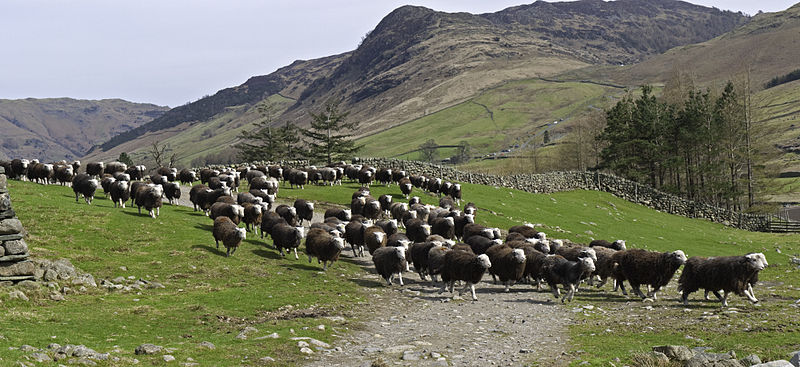
Stampeding sheep!
Stampeding sheep

Let's talk about how many sheep, $n_r$, are running...
- One animal gets spooked by a chipmunk, and starts running. $n_r=1$.
- The animals closest to the running sheep are spooked by the running sheep, and start running too. $n_r=3$.
- Their neighbors start running too. $n_r=6$.
- [The movement grows!]
- Distant sheep hear the rest of the herd moving, so it seems prudent to panic a bit! $n_r\approx$ the whole herd.
Positive feedback
Consider this dynamic described in "The Climate of Man":
- A change (to Earth's temperature) happens: The average global temperature rises (Let's say, because of higher $CO_2$ levels),
- This causes more ice in the Arctic to melt than usual.
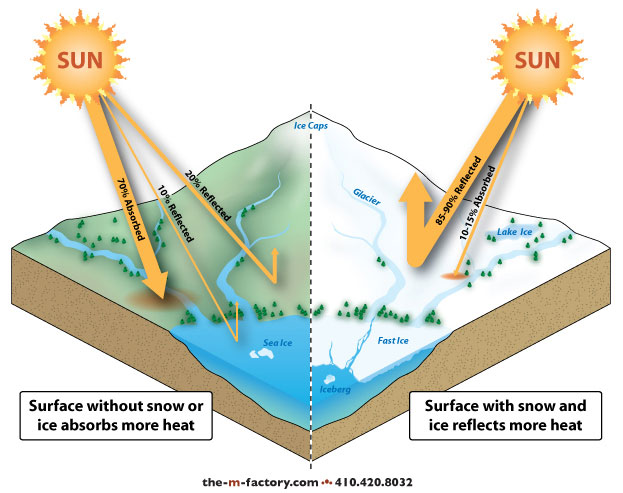
TES solutions teaching resources.
White ice mostly reflects light back into space. But darker water absorbs light energy, turning it into heat, - Because there is less ice and more water, more of the sun's energy is absorbed by the bare water near the North Pole.
- So, the overall global temperature goes up even further, [causing even more ice to melt, causing the ocean to absorb yet more sunlight each year...]
Positive feedback: A change happens. [Less ice because of higher temperatures]. This causes a change in the system. That change acts to further *magnify* the original change.
Basically we get into this vicious cycle that continues to feed upon itself.
Positive feedback tends to make systems unstable. That is, as time goes along, the system gets farther and farther away from where it started.
Unfortunately, this seems consistent with what's been observe recently--NASA animation of Arctic ice--1979 to 2016.
What gets "farther away" from where it started?
It could be temperature, $CO_2$ levels, animal extinctions, quantity of food available, population, percentage of land covered with forests....
Positive feedback, when it comes to global warming, means negative consequences!
Negative feedback
- One fall, an unusually high number of black squirrels manage to electrocute themselves at Goshen College.
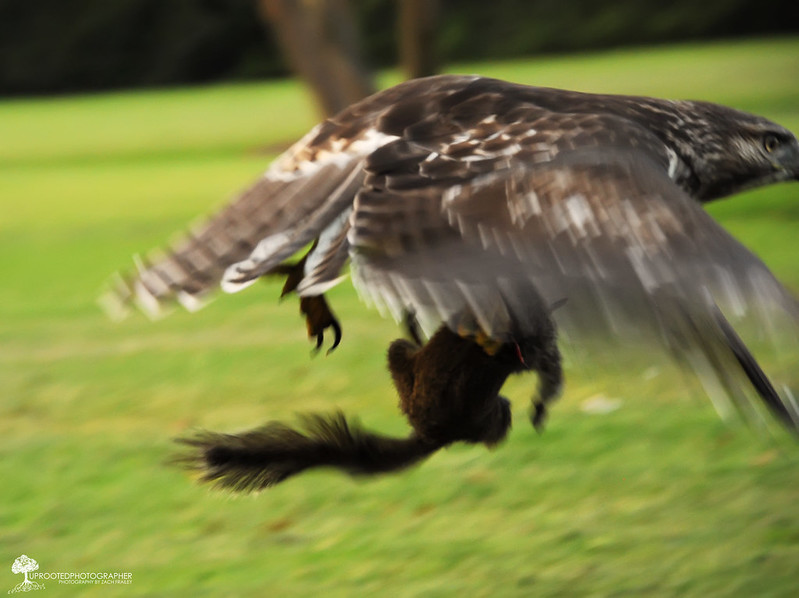
Zach Frailey
Hawks, which normally depend for part of their diet, on squirrel meat, don't eat so well, so more of them die than usual.- The next year there are fewer hawks around, so of the squirrels that are born, many more survive to adulthood.
Negative feedback: A change happens. [The population of squirrels drops]. This sets off a change elsewhere in the system [fewer hawks], that counteracts the original change. [More baby squirrels survive, so the population bounces back.]
Negative feedback makes a system more stable. It makes a system go back towards where it was before.
Feedback in Earth's atmosphere
Adding carbon-dioxide to Earth's atmosphere causes many different kinds of changes to the Earth. Modellers need to consider many of these mechanisms and try to calculate or better yet, *measure* whether these are large or small effects, and whether they are positive or negative
For each feedback cycle: complete the last step, and say whether the cycle is a positive feedback or a negative feedback cycle.
Increased plant growth
- Humans start emitting more carbon dioxide into the atmosphere ($CO_2$ increases).
- Plants thrive with higher levels of carbon dioxide,
- They grow faster, and in the process take more carbon out of the air and "fix" it in their cell walls.
- $\Rightarrow$ [What happens to atmospheric $CO_2$ levels?]
Forest fires
- A lot of $CO_2$ is added to the atmosphere.
- Average temperatures increase
- The higher the temperature, the faster dead trees and forest waste lose moisture and dry out
- The drier the dead trees and the forest waste are, the more likely that any small forest fire might grow and spread.
- The larger the forest fire, the more trees (both alive and dead) will burn.
- >$\Rightarrow$ [What happens to atmospheric $CO_2$ levels? Are they nudged further away from where they started, or moved back towards where they started?]
Air conditioning in a warming world
- Burning fossil fuels dumps $CO_2$ into the environment and causes the world to warm slightly.
- People with air conditioners run them for more days than before, because of the warming climate.
- More fossil fuels are burned to generate electricity for the air conditioners to run longer.
- $\Rightarrow$ [What happens to atmospheric $CO_2$ levels? Are they nudged further away from where they started, or moved back towards where they started?]
Home furnaces in a warming world
- Burning fossil fuels dumps $CO_2$ into the environment and causes the world to warm slightly.
- People in places with cold winters run their furnaces fewer days than before, because of the warming climate.
- Most furnaces (in the U.S.) burn natural gas, so less natural gas is burned for heating than before.
- $\Rightarrow$ [What happens to atmospheric $CO_2$ levels? Are they nudged further away from where they started, or moved back towards where they started?]
Methane deposits on the bottom of the ocean
Methane is the second most important greenhouse gas, after carbon-dioxide
- Global temperatures rise,
- The temperature of the oceans rises.
- At the bottom of the ocean, there are large frozen deposits of methane clathrates, which might be partially released with higher temperatures,
- The levels of methane in the atmosphere go up.
- ...?
Cloud formation scenario I
- Global temperatures rise.
- This causes increased evaporation of water into the atmosphere.
- Warmer air can also hold more water vapor than colder air.
- The average amount of area of Earth's surface covered with clouds increases.
- On sunny days, dark parts of Earth (e.g. paved parking lots) absorb sunlight and heat up. But when it's cloudy, the white tops of clouds reflect more of the sunlight energy back into space before it ever reaches Earth's surface.
- ....?
Cloud formation scenario II
- Global temperatures rise.
- This causes increased evaporation of water into the atmosphere.
- The average area of Earth's surface covered with clouds increases.
- Clouds, and all that extra water vapor act as an extra, insulating "blanket" reducing the amount of energy lost to outer space...
- ...?
Choose one of these articles to read. Describe and classify the feedback cycle.
- Solar power is contagious - The neighbor effect
- Beavers in the Arctic [NYTimes]
Can your group come up with others?
Uncertainty about the effect of clouds is one of the big reasons behind the IPCCs hedging on climate models
What the IPCC says in its most recent report (AR5, Climate Change 2013, The Physical Science Basis):
Here are pp 573, 574, the executive summary of Chapter 7, Clouds and Aerosols
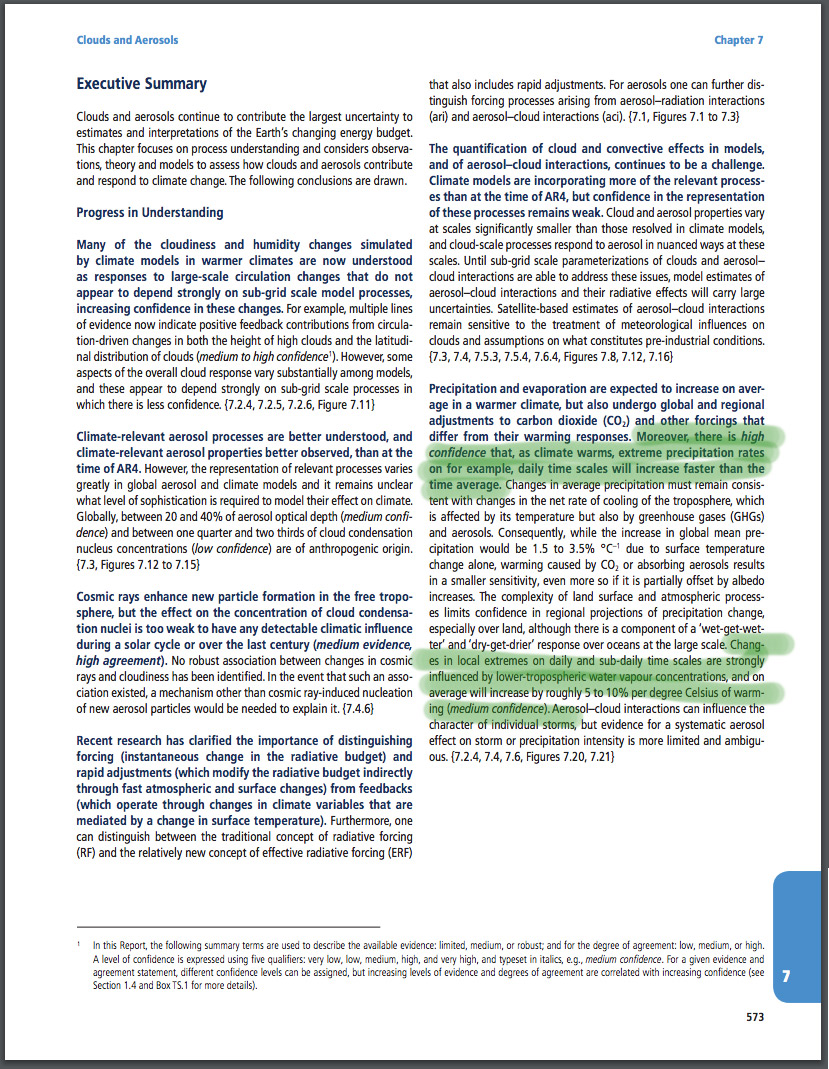

Tipping points
What processes are out there which will only kick in once the system is far away from its usual state?
- Tipping points [UK "met" ( = meteorological) service]
- Beavers emerge as agents of Arctic destruction [NYTimes]
- Can plants prevent permafrost thaw? [University of Edinburgh]
- "Six large amplifying feedbacks" [Climate Emergency Institute]
- More on Paul's 'feedback' bookmarks.
The largest uncertainty in climate models
There is one factor which leads to many of the most important feedback loops in Earth's climate system which is probably
- the most important,
- the least well understood,
- the most uncertain one of all,
It involves the response of this part of the system to changes:
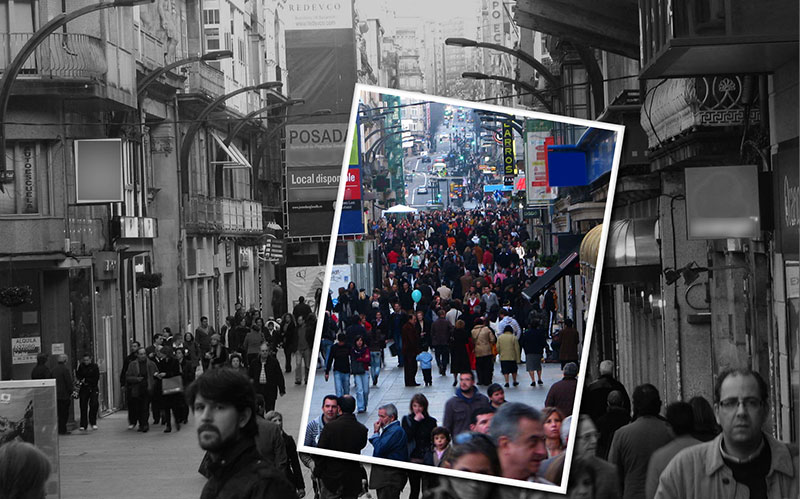
This part of the system has exhibited many tipping points in the past, which were not foreshadowed at all in the time dependence of the data:
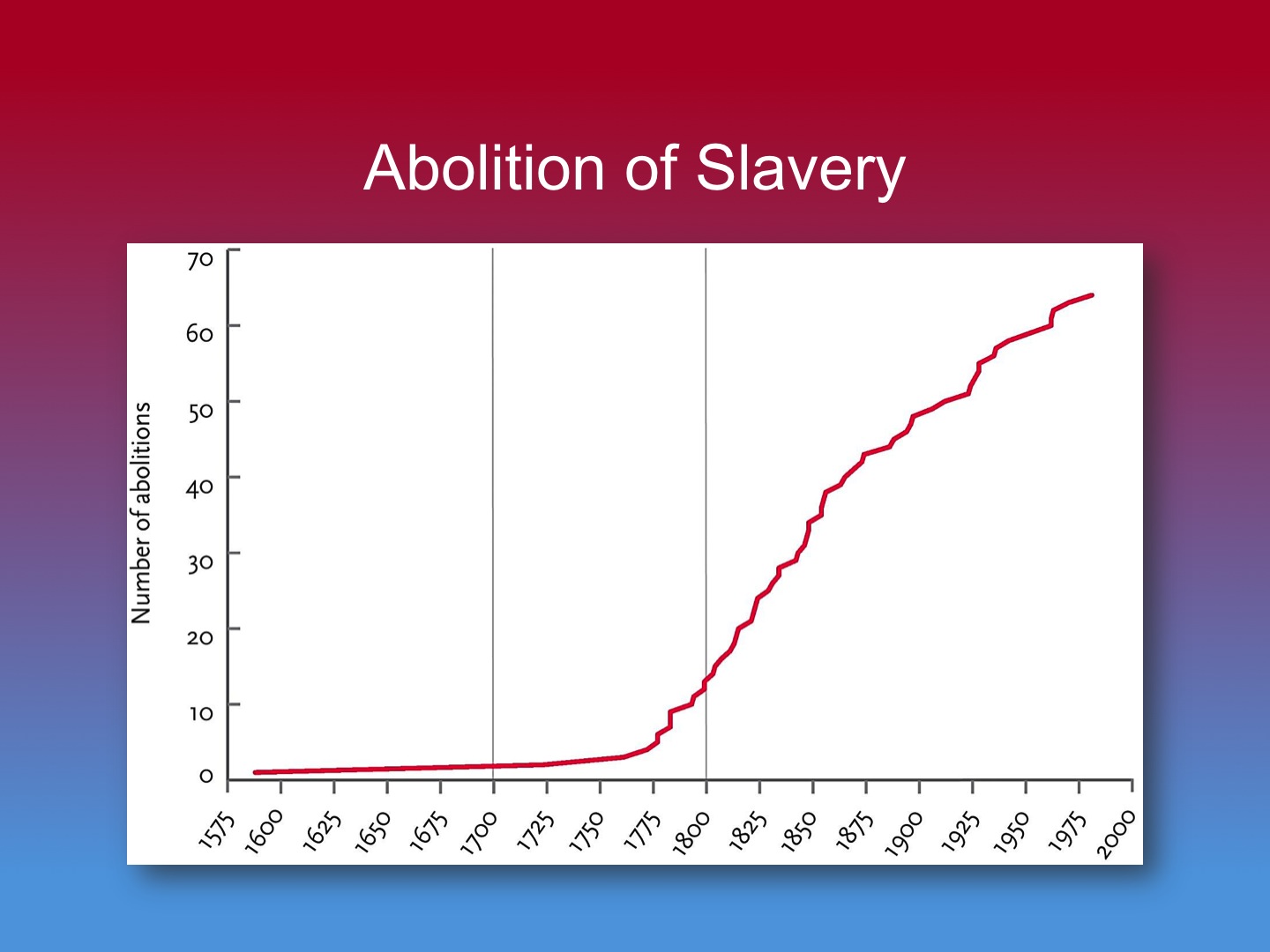
From A History of Violence, by Steven Pinker
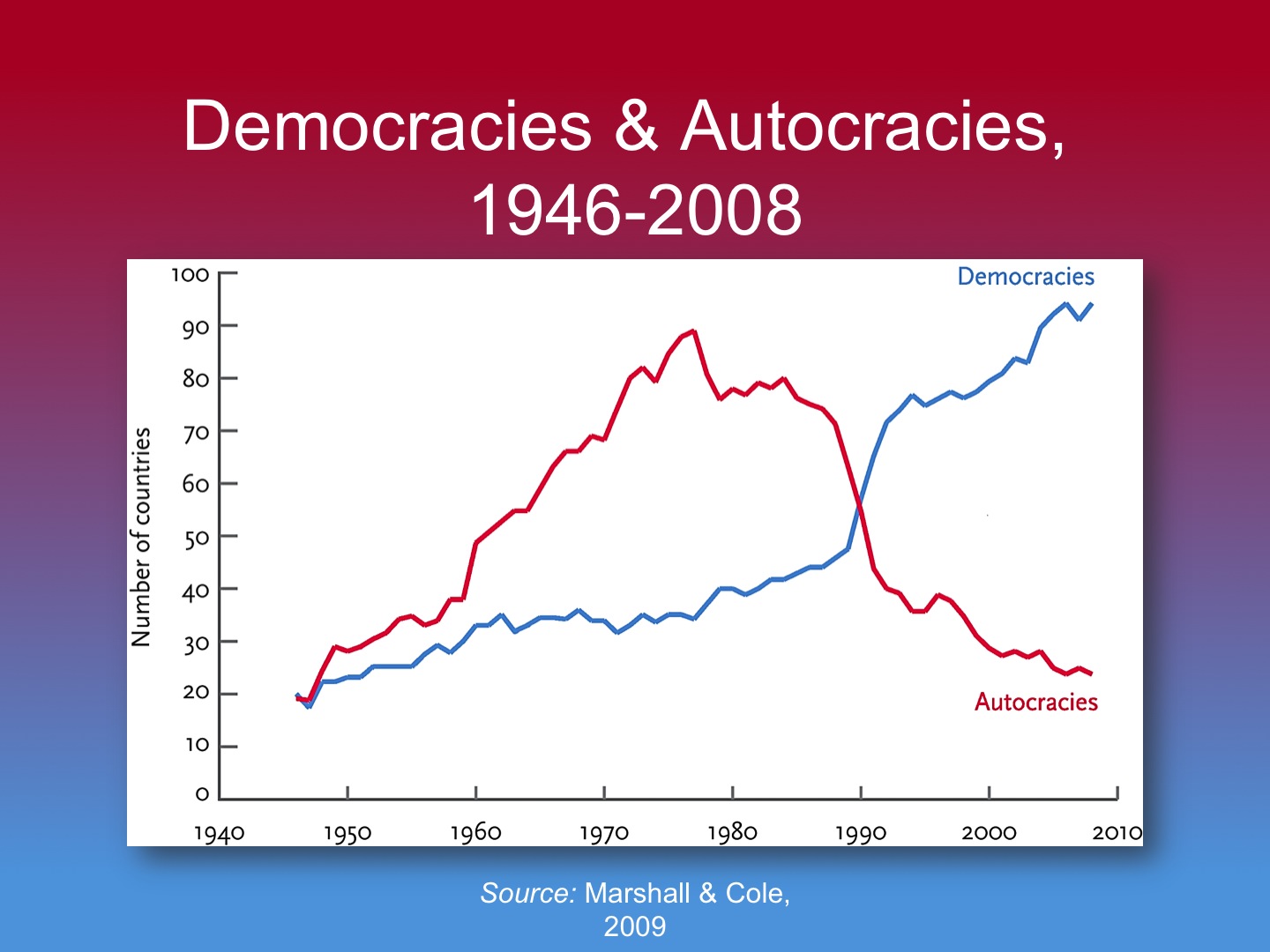
This part of the system exhibits strong, correlated feedback effects, as a result of interactions between the constituent parts, including this positive, positive feedback loop:
- Solar power is contagious - The neighbor effect
Image credits
Foxspain Fotografía, Andy Docker, Jason Swaby, IPCC, Andreas Christen, Manuel Scheikl, David MacKay
, Rob Lee